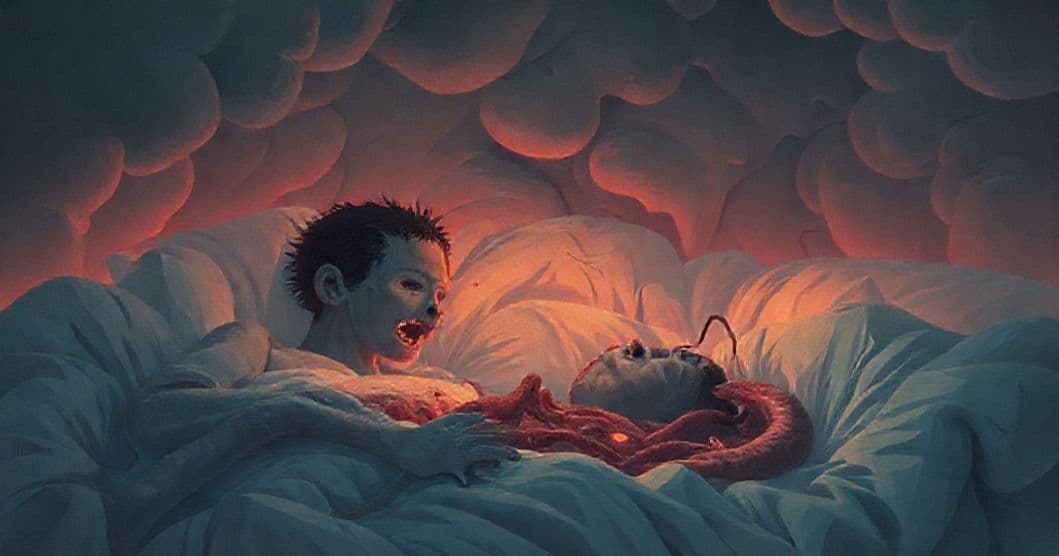Part 1: Dream Presentation
Dreams often serve as mirrors to our unconscious conflicts, sometimes revealing hidden aspects of ourselves we’d rather ignore. This dream, with its visceral imagery of cannibalism, offers a striking window into deeper psychological terrain. Here is the dreamer’s experience, reimagined with sensory and emotional depth:
Last night, I found myself in a dimly lit room surrounded by a group of people I didn’t fully recognize—strangers, yet somehow familiar, like old friends I’d lost touch with. The air hummed with laughter and the smell of something burning; they were smoking a joint, passing it around in a casual, almost ritualistic manner. I felt a knot of discomfort in my stomach as I watched them light up, knowing I didn’t want to participate. Still, when the joint came to me, I took a hesitant drag, just a small puff, and immediately felt the burn of the smoke in my throat. It tasted bitter, not the usual comfort of a familiar ritual, but something alien and unsettling.
Then the scene shifted. Without warning, the mood turned. What had been lighthearted camaraderie dissolved into something primal and frantic. I saw them eating—chewing, swallowing, their faces contorted in a mix of pleasure and urgency. My breath hitched as I leaned in closer, and my blood ran cold: what they were consuming wasn’t meat I recognized. It was human flesh. I could see the texture, the sinew, the faint outline of skin still clinging to bone. I wanted to look away, but my feet felt rooted to the spot, transfixed by the horror.
One person, a figure I vaguely knew, sat on the floor with a black plastic bag in their lap. From within the bag protruded a severed leg, its skin pale and still glistening. They tore off a piece and began eating it, their mouth working in mechanical, repetitive motions. I felt a surge of revulsion and nausea, yet I couldn’t move. When they finished, they stuffed the remaining fragments back into the bag and clutched it to their chest, eyes wild with desperation.
Want a More Personalized Interpretation?
Get your own AI-powered dream analysis tailored specifically to your dream
🔮Try Dream Analysis FreeThen, as if on cue, I found myself helping them clean up. We swept up bits of bone and tissue, tucking them into the black bag alongside the leg. There was no time to question why; it felt as though we were following an unspoken script. The urgency mounted as we worked—someone was coming, someone who would ask questions. We hid the evidence in a corner, behind a dusty couch, our movements quick and furtive. I woke up with a racing heart, confused and shaken, still trying to make sense of the dream’s visceral imagery. I’ve never felt so deeply unsettled by a dream before, and I can’t stop wondering what it means.
Part 2: Clinical Analysis
Symbolic Landscape: The Cannibalism Imagery
Cannibalism in dreams rarely literalizes the act of eating human flesh; instead, it functions as a powerful metaphor for psychological processes. In this dream, the consumption of human flesh can be interpreted as a symbol of identity fragmentation—the dreamer’s sense of self being broken down or absorbed into a collective. The group smoking together suggests social cohesion, but the shift to cannibalism reveals a darker undercurrent: when individuals merge into a group, they may lose distinctiveness, with
